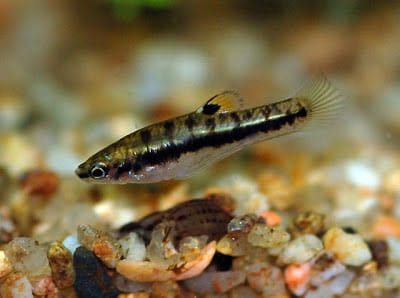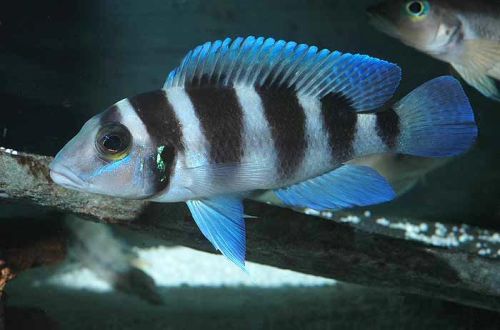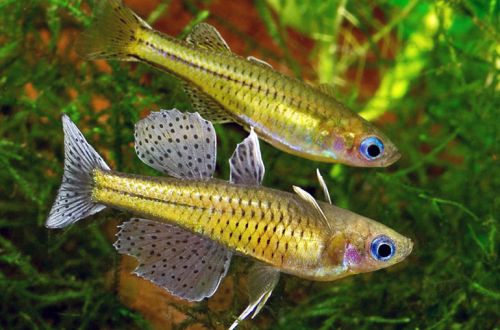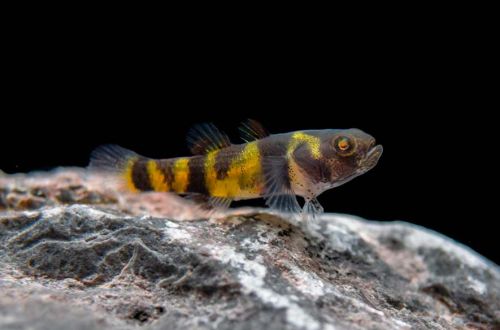
Formosa
Formosa, scientific name Heterandria formosa, belongs to the Poeciliidae family. A very small, slender, graceful fish, reaching only about 3 cm in length! In addition to size, it is distinguished by amazing endurance and unpretentiousness. A small flock of such fish can successfully live in a three-liter jar.

Habitat
Occurs in shallow wetlands of North America, the territory of the modern states of Florida and North Carolina.
Requirements and conditions:
- The volume of the aquarium – from 40 liters.
- Temperature – 20-24°C
- Value pH — 7.0–8.0
- Water hardness – medium hardness (10-20 dGH)
- Substrate type – any
- Lighting – moderate
- Brackish water – no
- Water movement is weak
- Size – up to 3 cm.
- Food – any small food
Description
Tiny miniature fish. Males are about one and a half times smaller than females, they are distinguished by a slender body shape. Their companions look somewhat thicker, with a rounded abdomen. The color is light with a yellowish tint. Along the entire body from head to tail stretches a longitudinal brown line.
Food
An omnivorous species, it will accept dry food as well as fresh, frozen or live foods such as bloodworms, daphnia, brine shrimp, etc. Before serving food, make sure the food particles are small enough to fit in the Formosa’s mouth. Uneaten food remains are recommended to be removed to avoid water pollution.
Maintenance and care
Setting up an aquarium is quite simple. When keeping Formosa, you can do without a filter, a heater (it successfully withstands drops to 15 ° C) and an aerator, provided that there is a sufficient number of root and floating plants in the aquarium. They will perform the functions of purifying water and saturating it with oxygen. The design should provide for various shelters made of natural or artificial decoration elements.
Social behavior
Peace-loving, schooling, shy fish, due to its small size, it is preferable to keep it in a separate species aquarium. They prefer a community of their own kind, it is allowed to share similar small fish, but no more. Formosa is often subjected to aggression from even seemingly peaceful fish.
Breeding / breeding
Breeding is possible only in warm water, the heater is useful in this case. Spawning can start at any moment. New generations will appear throughout the year. The entire incubation period, fertilized eggs are in the body of the fish, and already formed fry are born. This feature has developed evolutionarily as an effective protection of offspring. Parents do not take care of the fry and can even eat them, so it is recommended to place the fry in a separate tank. Feed micro food such as nauplii, brine shrimp, etc.
Fish diseases
Disease rarely accompanies this species. Disease outbreaks can only occur in very poor environmental conditions, through contact with infectious fish, from various injuries. Read more about symptoms and treatments in the Aquarium Fish Diseases section.





